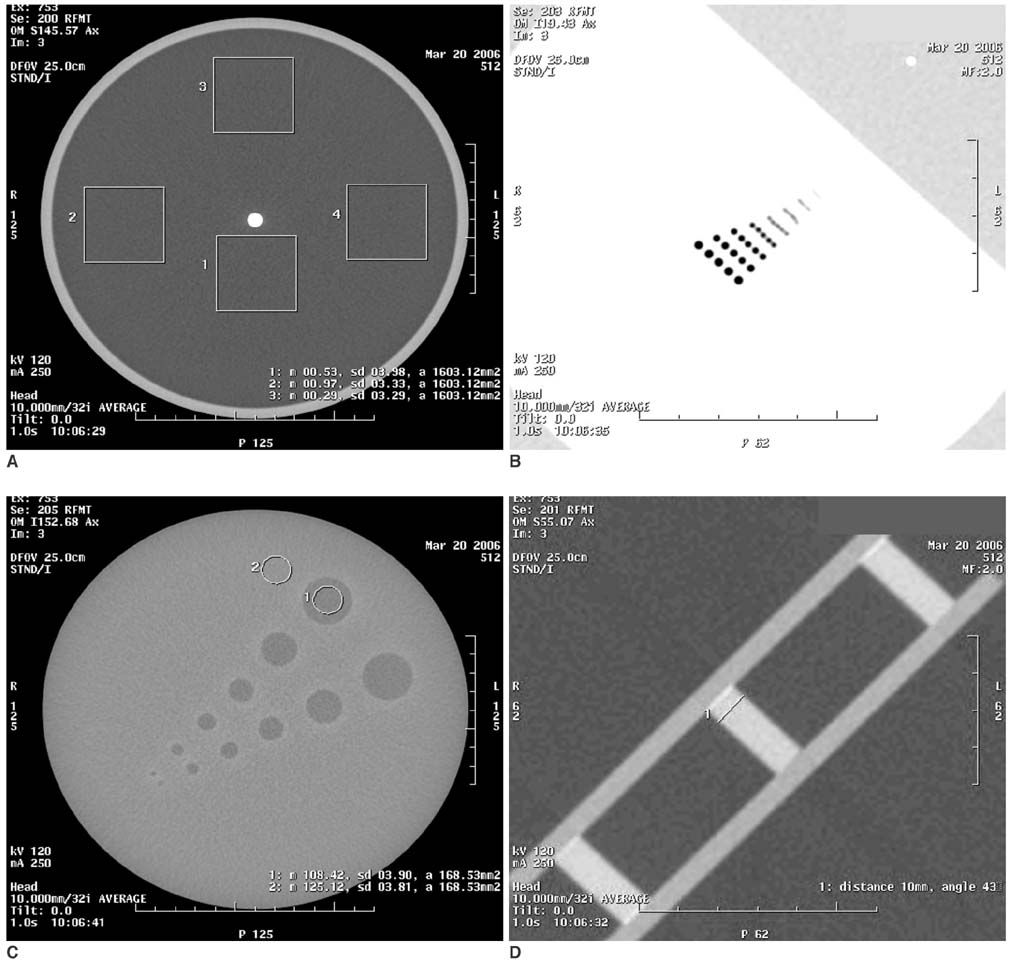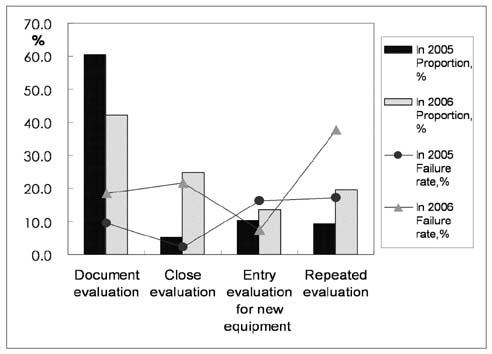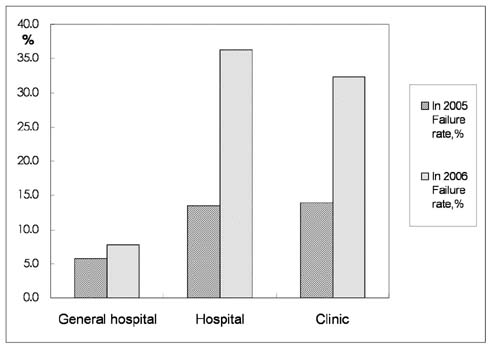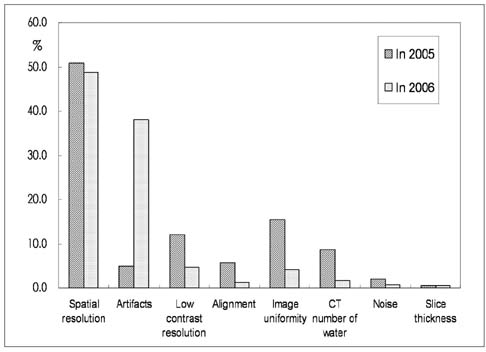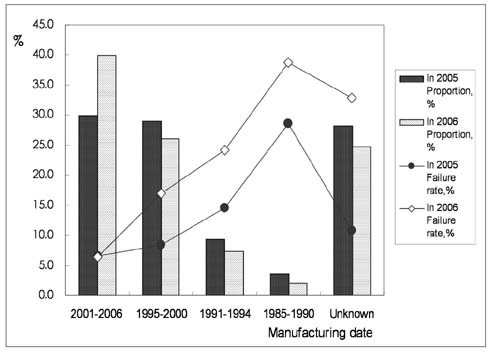Korean J Radiol.
2008 Aug;9(4):354-363. 10.3348/kjr.2008.9.4.354.
Review of Failed CT Phantom Image Evaluations in 2005 and 2006 by the CT Accreditation Program of the Korean Institute for Accreditation of Medical Image
- Affiliations
-
- 1Department of Radiology, College of Medicine, The Catholic University of Korea, Seoul, Korea. sejung@catholic.ac.kr
- 2Korea Institute for Accreditation of Medical Image, Seoul, Korea.
- 3Department of Radiology, Research Institute of Radiology, University of Ulsan College of Medicine, Asan Medical Center, Seoul, Korea.
- 4Human Radiologic Clinic, Seoul, Korea.
- KMID: 1076462
- DOI: http://doi.org/10.3348/kjr.2008.9.4.354
Abstract
OBJECTIVE
The CT accreditation program was established in 2004 by the Korean Institute for Accreditation of Medical Image (KIAMI) to confirm that there was proper quality assurance of computed tomography (CT) images. We reviewed all the failed CT phantom image evaluations performed in 2005 and 2006. MATERIALS AND METHODS: We analyzed 604 failed CT phantom image evaluations according to the type of evaluation, the size of the medical institution, the parameters of the phantom image testing and the manufacturing date of the CT scanners. RESULTS: The failure rates were 10.5% and 21.6% in 2005 and 2006, respectively. Spatial resolution was the most frequently failed parameter for the CT phantom image evaluations in both years (50.5% and 49%, respectively). The proportion of cases with artifacts increased in 2006 (from 4.5% to 37.8%). The failed cases in terms of image uniformity and the CT number of water decreased in 2006. The failure rate in general hospitals was lower than at other sites. In 2006, the proportion of CT scanners manufactured before 1995 decreased (from 12.9% to 9.3%). CONCLUSION: The continued progress in the CT accreditation program may achieve improved image quality and thereby improve the national health of Korea.
MeSH Terms
Figure
Cited by 1 articles
-
The Relationship between Subjective and Objective Parameters in CT Phantom Image Evaluation
Hye Jung Park, Seung Eun Jung, Young Joon Lee, Woo Il Cho, Kyung Hyun Do, Seung Hyup Kim, Ki Hwang Kim
Korean J Radiol. 2009;10(5):490-495. doi: 10.3348/kjr.2009.10.5.490.
Reference
-
1. Im TH, Na DG. Annual report No.1 2004~2006. 2007. Seoul: Korean Institute for Accreditation of Medical Image (KIAMI);1–28. 75–105.2. Department of education, KIAMI. The workshop for the examiners on quality assurance program (2005). 2005. Seoul: KIAMI;13–31.3. Department of education, KIAMI. The workshop for the examiners of quality assurance program (2006). 2006. Seoul: KIAMI;141–177.4. Nuclear Associates 76-410-4130 and 76-411, AAPM CT Performance Phantom, Users Manual. 2005. March. Fluke Corporation.5. American Colleges of Radiology (ACR). CT accreditation program requirement. http://www.acr.org/accreditation/computed/ct_reqs.aspx .6. McCollough CH, Bruesewitz MR, McNitt-Gray MF, Bush K, Ruckdeschel T, Payne JT, et al. The phantom portion of the American College of Radiology (ACR) computed tomography (CT) accreditation program: practical tips, artifact examples, and pitfalls to avoid. Med Phys. 2004. 31:2423–2442.7. Reddinger W. CT image quality; OutSource, Inc. 1998. http://www.e-radiography.net/mrict/CT_IQ.pdf .8. Judy PF, Balter S, Bassano D, McCullough EC, Payne JT, Rothenberg L. AAPM report No.1 phantoms of performance evaluation and quality assurance of CT scanner. 1977. Chicago, Illinois: AAPM.9. Euclid S. Computed tomography: physical principles, clinical applications and quality assurance. 1994. Philadelphia: Saunders: 174–199.
- Full Text Links
- Actions
-
Cited
- CITED
-
- Close
- Share
- Similar articles
-
- The Relationship between Subjective and Objective Parameters in CT Phantom Image Evaluation
- Healthcare Accreditation in Korea: The Current Status and Challenges Ahead
- Acceptance Test and Clinical Commissioning of CT Simulator
- Which Phantom Is Better for Assessing the Image Quality in Full-Field Digital Mammography?: American College of Radiology Accreditation Phantom versus Digital Mammography Accreditation Phantom
- Image Quality Improvement after Implementation of a CT Accreditation Program

